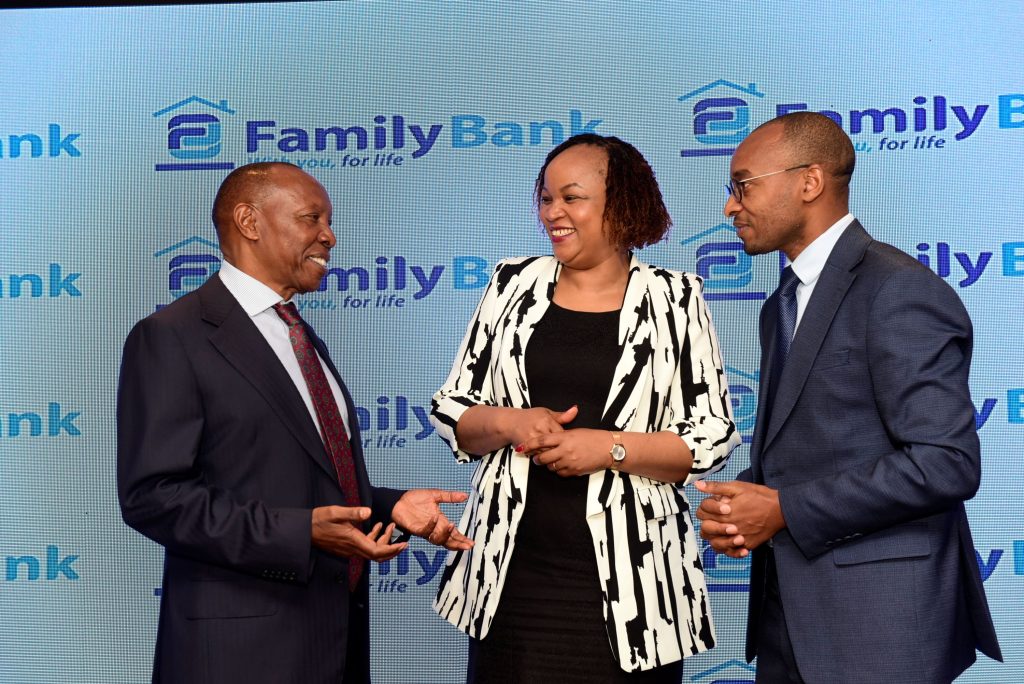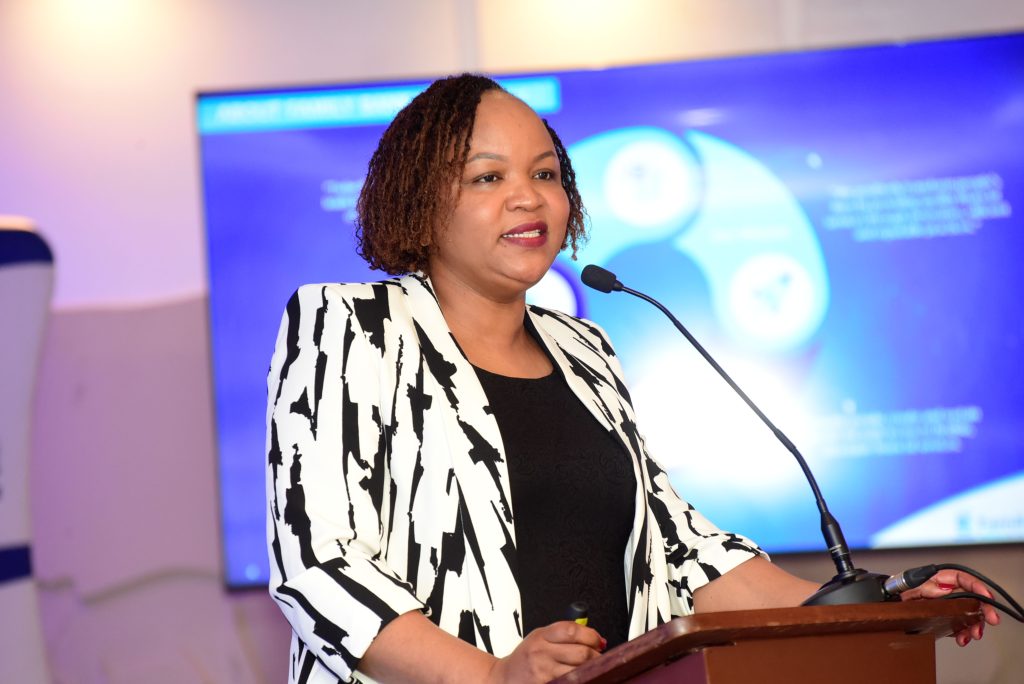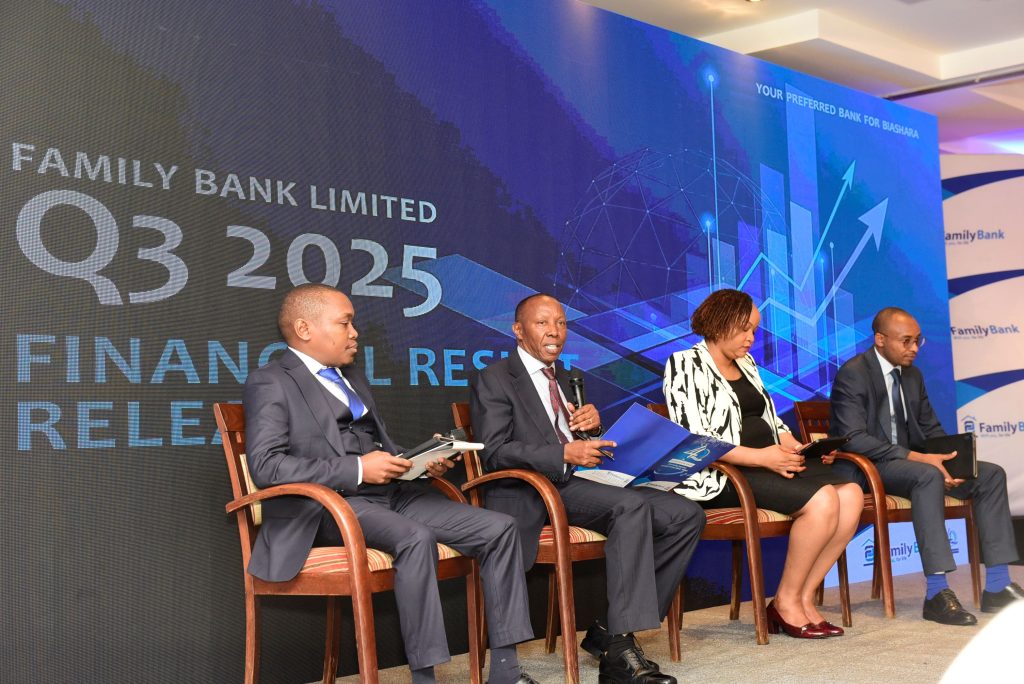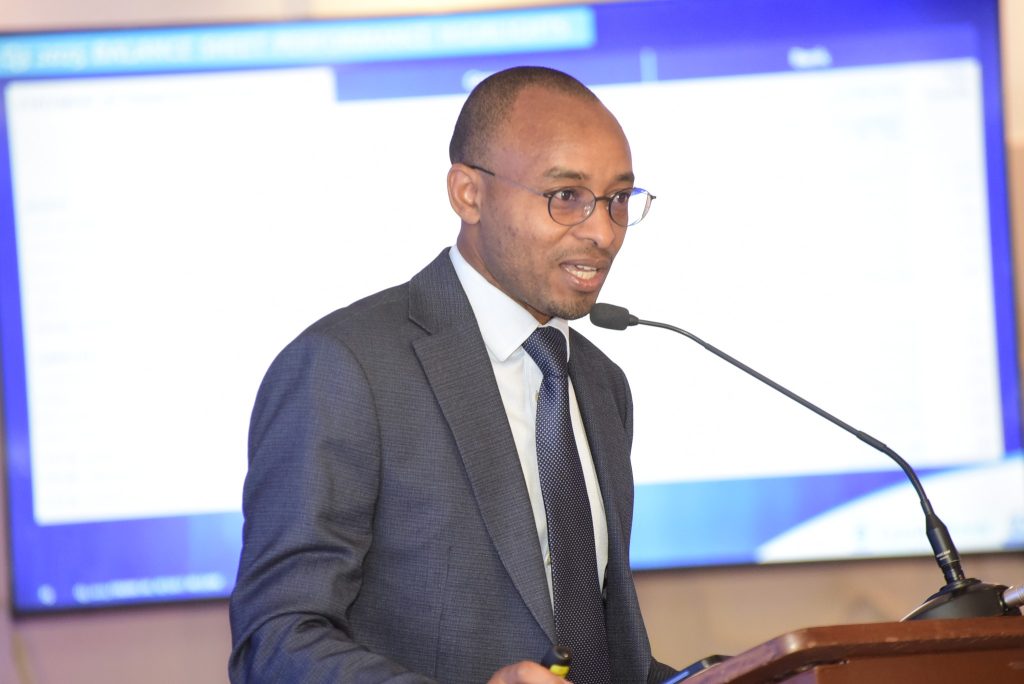
Family Bank Chair Lazarus Muema, CEO Nancy Njau and Chief Finance Officer Paul Ngaragari during the release of 2025 Q3 financial results where the Bank reported a 56% growth increase in Profit After Tax to KES 3.5 billion.
- Family Bank Records KES 3.5 Billion Profit After Tax in the Nine Months 2025;
Family Bank Group has posted a 56% increase in Profit After Tax to KES 3.5 billion for the nine months ended September 30, 2025, up from KES 2.3 billion in the same period last year.

The performance was driven by sustained growth in interest income, a strong balance sheet and prudent cost management.
Total assets grew by 24.1% to KES 202.5 billion driven by increase in investments in Government securities to KES 39.0 billion. The loan book expanded by 10.1% to KES 103.7 billion, while total interest income grew by 21.2 % largely due to interest from loans and income from investments in government securities.

The Bank closed the 9 months with a remarkable KES 10.9 billion net interest income.
Total non-funded income grew by 14.4%, driven by increased customer transactions, sustained investment in digital solutions, and a focus on partnerships targeting SME lending.

Speaking during the investor briefing forum, Family Bank CEO Nancy Njau attributed the strong performance to the Bank’s effective execution of its strategic priorities
“This robust performance is in line with our strategic focus, prioritising innovation, digital transformation, customer-centricity, and strategic partnerships aimed at scaling our SME lending capabilities.

This positions Family Bank as the Preferred Bank for Biashara as we work towards our planned listing at the NSE in 2026.
As we go to the final quarter of the year, close of the year, we continue to place our customers at the fore and drive sustainable shareholder value,”she said.
Customer deposits grew by 15.3% to KES 146.8 billion, underlining customers’ continued trust and confidence in the Bank’s financial stability and service delivery.

Operating expenses increased by 33%, primarily driven by a moderate growth in staff costs and a prudent provisioning for loan losses, which rose to KES 1.3 billion in line with the Bank’s risk management approach.
Core capital stood at KES 19.6 billion, up from KES 14.7 billion, signalling strong capital adequacy in light of the progressive core capital requirements.
 The liquidity ratio also remained well above the statutory requirement of 20% at 54.4% underscoring the Bank’s strong balance sheet and capital adequacy.
The liquidity ratio also remained well above the statutory requirement of 20% at 54.4% underscoring the Bank’s strong balance sheet and capital adequacy.






